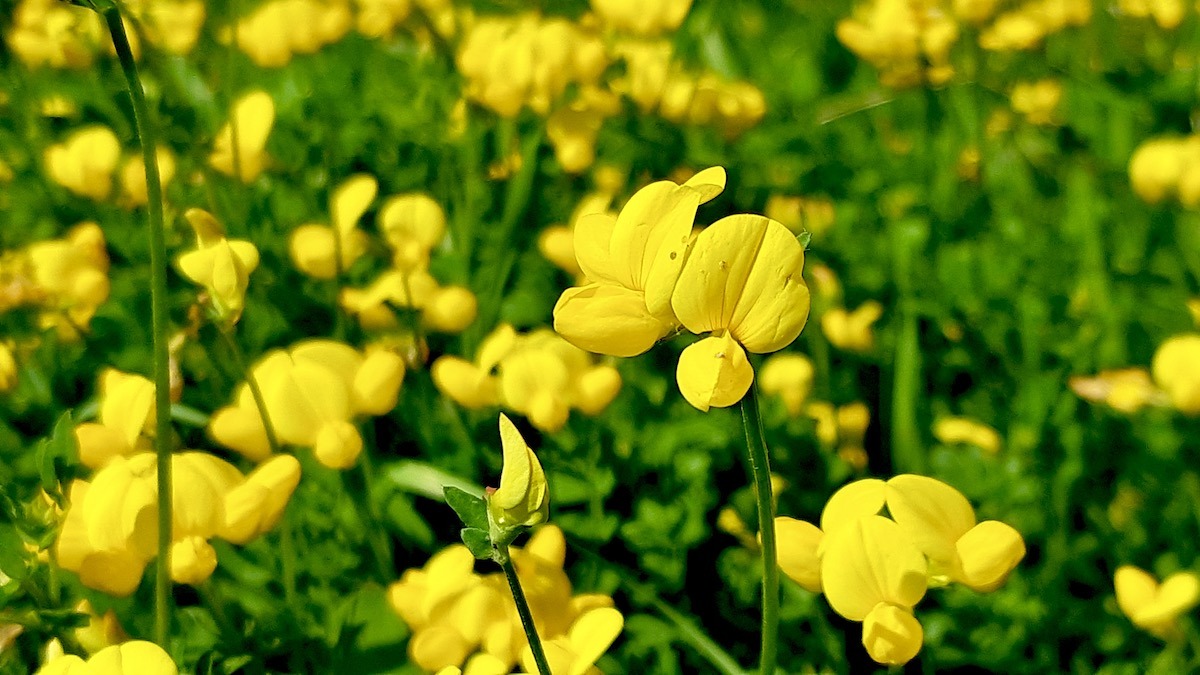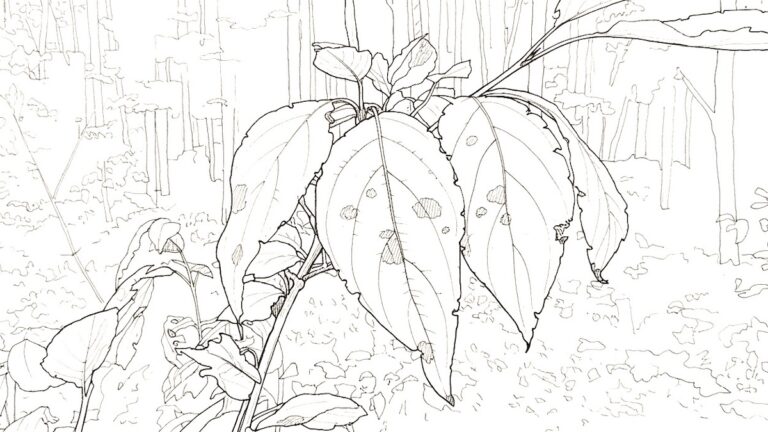
Golden patches of Birdsfoot Trefoil brighten the summer fields of Northwestern Ontario.
Golden Sprawl of Summer
When summer arrives in full force, Birdsfoot Trefoil (Lotus corniculatus) blankets open areas with a cheerful, golden glow across Northwestern Ontario. These vibrant yellow, pea-like flowers, often clustered in whimsical arrangements, create a sun-drenched carpet across meadows and roadsides. Though not native, its widespread presence now makes it a familiar and welcome sight, providing bright splashes of color and a valuable food source for various insects. Its unassuming beauty shows us that even common plants contribute to the rich tapestry of our natural world, offering simple joy and vital ecological service wherever they grow.
This summer, our art program has been focusing on the diversity of local plants, and the sunny fields of Birdsfoot Trefoil have been a favorite subject for outdoor photography.
Birdsfoot Trefoil is widely used as a forage crop for livestock, especially in areas where other legumes might struggle. Its deep root system helps it handle drier conditions, and its nutritional value makes it a good feed source for Ontario agriculture. While not commonly eaten by humans, the young leaves and pods could theoretically be consumed, though their small size makes them less practical for foraging. Its main value lies in its role in agriculture and its contributions to pollinator health across Ontario. Discussions about such traditional plant use and the broader impact of introduced species have been a key part of our summer art programs’ storytelling sessions.
Beyond its practical applications, the visual impact of a field covered in Birdsfoot Trefoil is simply delightful. The sheer abundance of its bright yellow blooms can transform a simple roadside or meadow into a vibrant landscape. It’s a plant that quietly contributes to both the beauty and the functionality of many North American ecosystems, including those in Northwestern Ontario.






